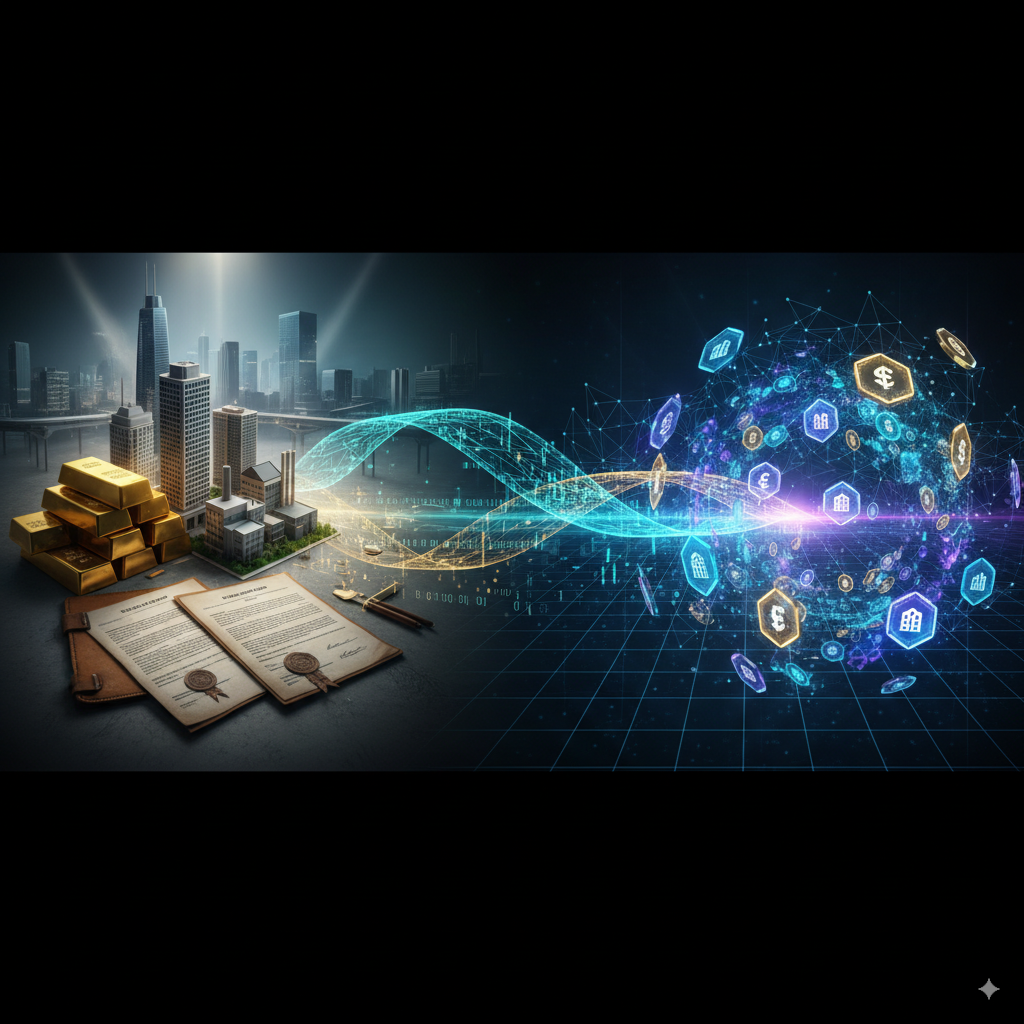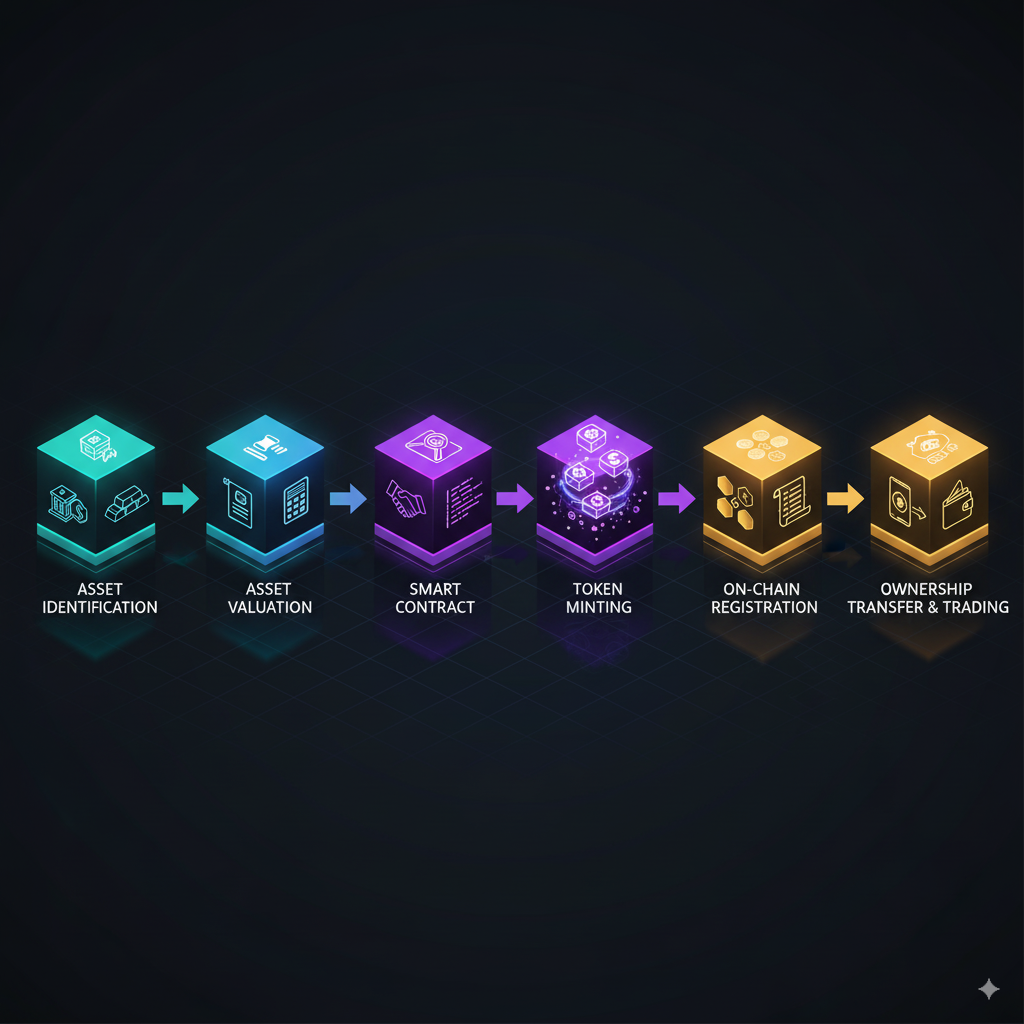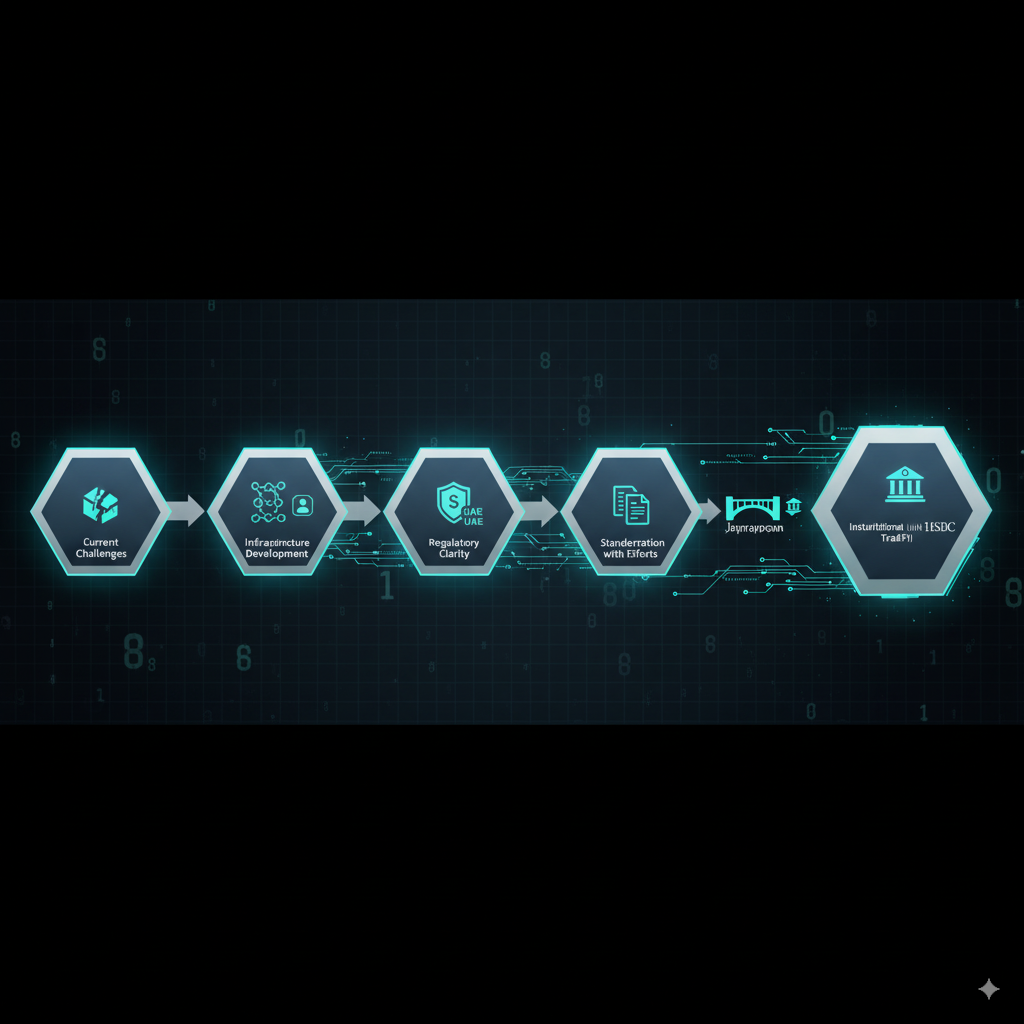Bridging Worlds: How RWA Tokenization is Revolutionizing Asset Ownership

Estimated reading time: 11 minutes
Key Takeaways:
- RWA tokenization brings real-world assets—like real estate, commodities, and financial instruments—onto the blockchain, unlocking liquidity and fractional ownership for a global investor base.
- Tokenized assets are programmable, divisible, and instantly transferable, delivering lower entry barriers and enhanced transparency.
- Rapid growth is underway, but navigating legal frameworks, security, and the on-chain/off-chain connection remains crucial.
- As regulatory clarity improves and infrastructure matures, tokenized assets are expected to reshape both traditional and digital asset markets.
Table of Contents
- What is RWA Tokenization? Breaking Down the Basics
- The Asset Revolution: What Can Be Tokenized?
- The Trillion-Dollar Opportunity: Why Tokenization Matters
- Market Size and Growth: The Numbers Behind the Trend
- Challenges and Risks: The Reality Check
- The Future Landscape: What’s Next for RWA Tokenization?
- Common Questions About RWA Tokenization
- Conclusion: The Bridge Between Worlds
In the vast landscape of blockchain innovation, one development stands poised to transform both traditional finance and the digital asset ecosystem: the tokenization of real-world assets (RWAs). Beyond the familiar world of cryptocurrencies, blockchain technology is now extending its transformative potential to tangible assets that have existed in traditional markets for centuries. For readers new to blockchain, you may want to review the foundations in Blockchain Basics to better understand the technology underpinning tokenization.
But what exactly happens when your apartment building, gold reserves, or corporate bonds get “tokenized”? Let’s dive into this fascinating convergence of the physical and digital worlds, where blockchain’s disruptive potential meets trillions of dollars in traditional assets.
What is RWA Tokenization? Breaking Down the Basics
RWA tokenization is the process of converting ownership rights of physical or financial assets into digital tokens on a blockchain. Think of these tokens as digital certificates that represent your ownership stake in something tangible – whether that’s real estate, fine art, commodities, or financial instruments. If you’re still familiarizing yourself with the concept of digital assets or tokens, our Digital Assets: Beginner’s Guide to Cryptocurrencies & Tokens (2025) provides more background.
These digital tokens aren’t just simple records; they’re programmable, divisible, and instantly transferable across borders with minimal intermediaries. Each token represents a fraction of the underlying asset, allowing for unprecedented levels of partial ownership.
How does it actually work?
- A real-world asset is identified and legally structured for tokenization
- The asset undergoes valuation and verification processes
- A legal framework is established to connect the digital tokens to the physical asset
- Smart contracts are developed to manage ownership rights and distributions
(What Are Smart Contracts? A Beginner’s Guide for August 2025) - Tokens are created (minted) on a blockchain platform, often using standards like ERC-20 or ERC-1155
- These tokens are then available for purchase, representing fractional ownership in the underlying asset

The result? Assets that were previously illiquid, inaccessible, or difficult to transfer can now be bought and sold with the same ease as sending an email.
The Asset Revolution: What Can Be Tokenized?
The potential scope of tokenization spans virtually any asset with value. Here’s a breakdown of major categories currently being transformed:
Real Estate: Property Ownership Reimagined
Real estate has emerged as one of the most promising sectors for tokenization. Consider these real-world applications:
- Commercial properties: A $10 million office building can be tokenized into 10,000 tokens worth $1,000 each, allowing investors to own fractions of premium commercial space.
- Rental income streams: Tokens can represent rights to rental income, distributing payments automatically through smart contracts.
- Development projects: Tokenization allows broader participation in real estate development, with investors able to enter with smaller amounts.
Case Study: RealT has tokenized dozens of residential properties in the U.S., with tokens starting at just $50, enabling global investors to access the U.S. real estate market and receive rental income distributions automatically through smart contracts (What Are Smart Contracts?).
Commodities: Making the Physical Digital
Physical commodities, historically difficult for retail investors to access directly, are finding new life through tokenization:
- Precious metals: Gold bars stored in secure vaults can be tokenized, with each token representing ownership of a specific weight.
- Energy and natural resources: Oil reserves, carbon credits, and renewable energy production can be tokenized to create more liquid markets.
- Agricultural products: Tokenized agricultural commodities enable smaller investors to gain exposure to these markets.
Example: Paxos Gold (PAXG) and Tether Gold (XAUT) are tokenized gold products where each token is backed by one fine troy ounce of physical gold held in reserves.
If you’re curious how commodities and other digital assets are traded securely, refer to Crypto Exchange Security Guide 2025: Regulations & Safety Measures.
Financial Instruments: Banking on Blockchain
Traditional financial products are being reimagined through tokenization:
- Private credit and loans: Loans can be tokenized and fractionalized, allowing investors to diversify across many lending opportunities.
- Bonds and debt instruments: Corporate and government bonds can be tokenized to increase accessibility and liquidity.
- Private equity and venture investments: Tokenization can open up previously exclusive investment opportunities to broader audiences.
Real-world example: MakerDAO has expanded its treasury to include tokenized U.S. Treasury bonds, with over $1.4 billion in exposure to real-world assets.
The Trillion-Dollar Opportunity: Why Tokenization Matters
Tokenization isn’t just a technological curiosity—it offers transformative benefits that address longstanding challenges in traditional asset markets:
For Investors
- Lower barriers to entry: Invest in premium assets with minimal capital requirements
- Enhanced liquidity: Trade traditionally illiquid assets more easily
- Portfolio diversification: Access previously inaccessible asset classes (Benefits of Cryptocurrency: Why Digital Assets Matter in 2025)
- Transparent ownership: Track provenance and transaction history on immutable ledgers
- Automated distributions: Receive dividends, rental income, or interest automatically via smart contracts
For Asset Owners and Issuers
- Liquidity premium: Unlock value from illiquid assets
- Global investor base: Access worldwide capital without geographic limitations
- Reduced intermediary costs: Lower fees compared to traditional securitization
(Crypto Exchange Fees Guide 2025: Compare Trading Costs & Save Money) - Efficient administration: Automate compliance, distributions, and investor management
- Innovative financing models: Create new ways to raise capital and structure offerings
Market Size and Growth: The Numbers Behind the Trend
The tokenized asset market is experiencing explosive growth:
- Current market capitalization: $13.5 billion as of December 2023, representing 60% growth in just one year
- McKinsey projection: Tokenized markets could reach $2 trillion by 2030
- Boston Consulting Group: Estimates that tokenized illiquid assets could reach $16 trillion by 2030
Here’s how the tokenized RWA market currently breaks down by asset class:
| Asset Category | Current Market Share | Growth Rate (YoY) |
|---|---|---|
| Fixed Income | 48% | 79% |
| Real Estate | 22% | 52% |
| Private Equity | 14% | 63% |
| Commodities | 12% | 41% |
| Other Assets | 4% | 38% |
For more information about how various types of cryptocurrencies—including those representing tokenized assets—are categorized, see Types of Cryptocurrencies: A Complete Guide for Beginners (2025).
Challenges and Risks: The Reality Check
Despite the promising outlook, several significant challenges remain:
Regulatory Uncertainty
The regulatory landscape for tokenized assets remains complex and evolving. Different jurisdictions have varying approaches to securities laws, property rights, and digital assets. This creates compliance challenges for cross-border tokenization projects. To better understand crypto regulations and their impact on assets, refer to Regulations & Legal Aspects of Crypto Trading (2025).
The On-Chain/Off-Chain Connection
A fundamental challenge is maintaining the connection between the digital token and the physical asset it represents. This typically requires:
- Trusted custodians for physical assets
- Regular audits and verification processes
- Legal frameworks that recognize token ownership as legal ownership
- Oracles to bring real-world data on-chain
Security Considerations
Smart contract vulnerabilities, custody risks, and private key management present security challenges that could lead to loss of assets or disputed ownership. For tips on securing your digital assets, including those held on exchanges or in wallets, see Wallets & Security (2025): A Complete Beginner’s Guide.
Market Infrastructure
The ecosystem for trading, custody, and settlement of tokenized assets is still developing. Questions remain about interoperability between platforms and integration with traditional financial systems.
The Future Landscape: What’s Next for RWA Tokenization?
As the market matures, several trends are emerging:
- Institutional adoption: Major banks including JPMorgan, Goldman Sachs, and HSBC are piloting tokenization projects
- Regulatory clarity: Jurisdictions like Singapore, Switzerland, and the UAE are creating clear frameworks for tokenized assets
- Infrastructure development: Solutions for identity verification, asset auditing, and interoperability are improving rapidly
- Integration with TradFi: Traditional finance is increasingly incorporating tokenized assets into existing systems
- Standardization efforts: Industry groups are working to establish common standards for tokenization practices

Common Questions About RWA Tokenization
Conclusion: The Bridge Between Worlds
The tokenization of real-world assets represents one of the most significant applications of blockchain technology beyond cryptocurrencies. By bringing the benefits of digital assets to the vast pool of traditional assets, tokenization creates a bridge between conventional finance and the emerging decentralized ecosystem.
For investors and asset owners willing to navigate the evolving landscape, RWA tokenization offers unprecedented opportunities to reimagine how we own, trade, and interact with assets. While challenges remain, the trajectory is clear: we’re witnessing the early stages of a transformation that could ultimately reshape the global financial system.
The question isn’t whether tokenization will impact traditional asset markets, but how quickly and extensively this revolution will unfold. As regulatory frameworks mature and infrastructure develops, we can expect tokenized assets to become an increasingly significant component of both traditional portfolios and the digital asset ecosystem. If you’re ready to explore platforms where tokenized assets and many other cryptocurrencies are traded, some leading exchanges include Binance, Coinbase, Bybit, OKX, and Kucoin.
What are your thoughts on RWA tokenization? Have you invested in tokenized assets or are you considering it? Share your experiences in the comments below!
